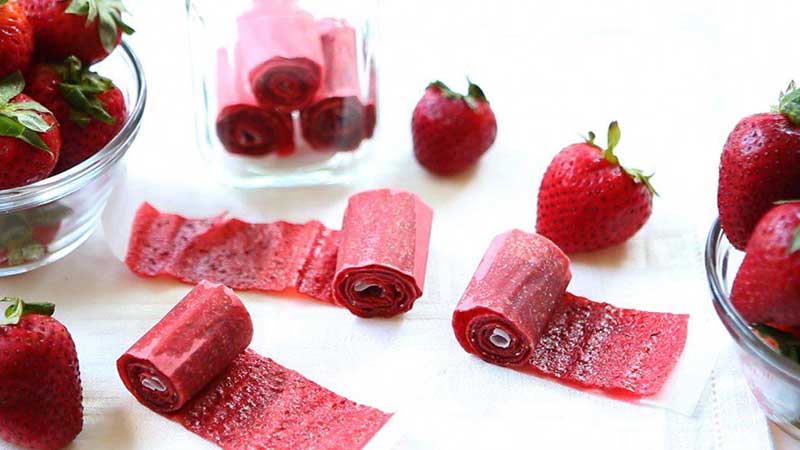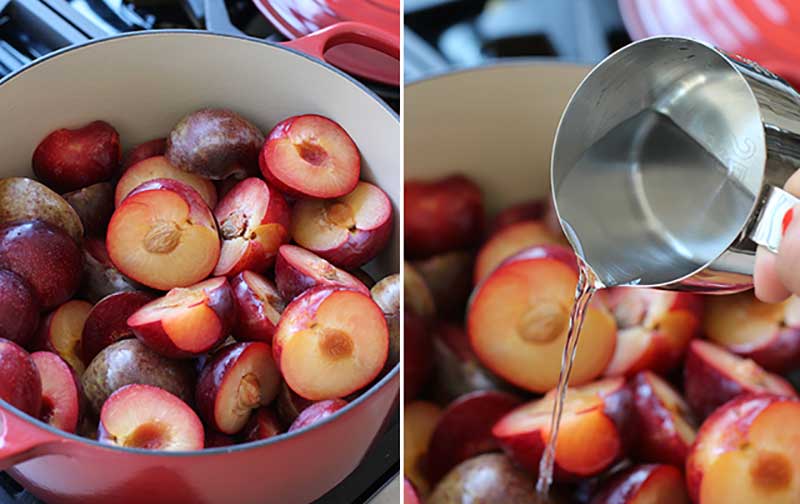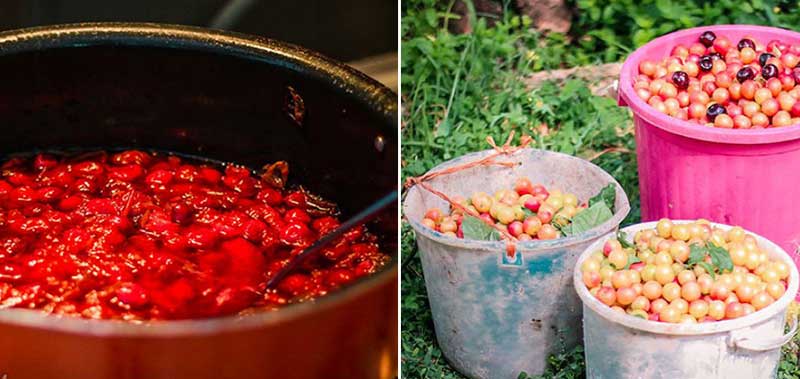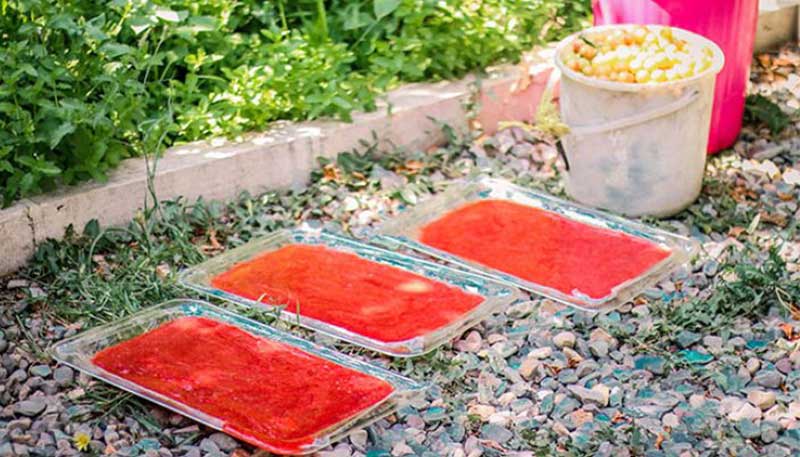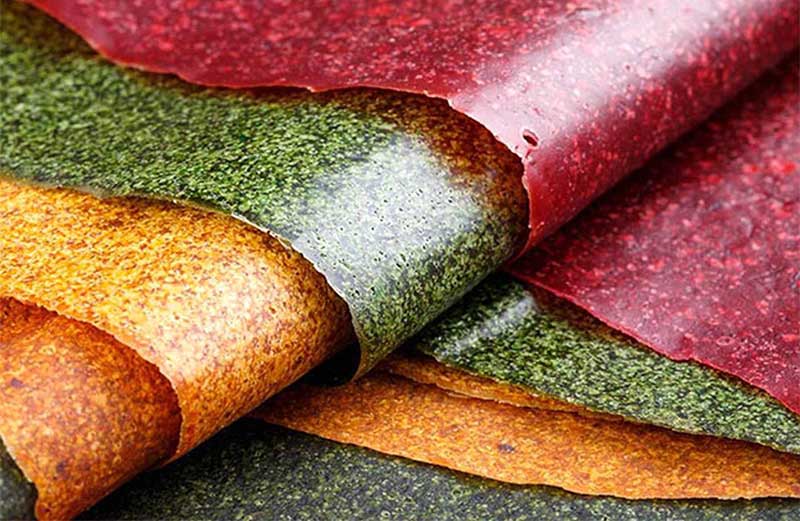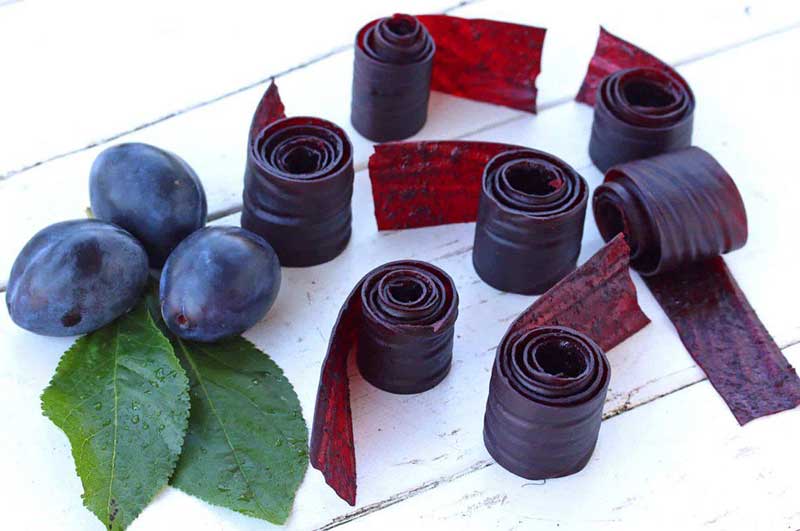The Lavashak (fruit rolls) found on the shelves in the market never taste as good as home-made ones. It has been customary since old times to make fruit roll-up from different types of fruit.
Most Iranian kids remember seeing cooked fruit being spread across round trays and put on rooftops to dry and turn into fruit roll-ups.
While fruit roll-ups debuted in grocery stores across America just in 1983, Lavashak (Persian Fruit Leather) has been made in Iran since a very long time ago.
How to Make Lavashak
Summer, with diverse types of fruit and hot sunshine, is the best season to make fruit roll-ups.
Sour cherries, yellow plums, apricots, raspberries, blackberries, peaches and other summer fruits can be made into fruit roll-ups.
Based on what taste one prefers (sour, sweet or sour-sweet), one can mix different types of fruit with different amounts. Each fruit can be used alone to make roll-ups or they may be mixed.
If you like sour fruit roll-ups, for example, you can add more raspberries and sour cherries. If you prefer roll-ups sweet, you may add more plums and apricots. If you like them sour-sweet, add an equal amount of each fruit.
Ingredients for Persian Fruit Leather
Sour cherries, raspberries, apricots, yellow plums and blackberries: mixed in amounts as you wish depending on whether you prefer sour, sweet or sour-sweet tastes.
Making Steps For Lavashak
Step 1:
Deseed the fruits after washing them and mix them all with some water and put the mixture on the heat to cook.
Step 2:
The mixture should remain on the oven for quite some time, so that the mixture will become completely thick and the fruits are cooked through and mashed. It takes around one hour. Add some salt at the end.
Step 3:
After the mixture gets cool a little, strain it to get a consistent mixture.
Step 4:
Grease the tray or whatever dish you have chosen with some oil before spreading the mixture onto it to get a thin, flat layer. Then put it under the sun. You had better cover the tray with thin cloth to keep away insects and dust.
Step 5:
The roll-ups are ready in two or three days’ time.
Step 6:
Now cut the roll-ups into pieces and remove them from the tray.
Additional Points
1. Remember that you should not make the paste too thin. That is because your Lavashak gets even thinner after drying up, and if too thin, your Lavashak will be dry and stiff.
2. If you cannot place Lavashak in sunlight, you can place it before a fan or air cooler.
3. Remember that Lavashak should be dehydrated completely before removal and cutting. Without fully drying, they form molds very quickly and your effort is wasted.
4. The best place to keep Lavashak is a cold and dry cabinet. Make sure you never keep your fruit leather in a refrigerator because it leads to the layers to stick together.
5. Kiwis alone cannot be used to make Lavashak. That is because of the fruit’s high acidity. Kiwis should be mixed with plums to make Persian fruit leather.
6. You can get creative and place a mixture of different fruit, you have in your refrigerator, inside the pot and make a Lavashak with a new flavor.
Frequently asked questions:
1. Which fruits can be used to make Lavashak?
Almost all stone fruits can be used to make Lavashak. The most favorite fruits to make Lavashak, however, are apricots as well as different black, yellow and red plums. But you should not ignore such fruits as strawberries, oranges, kiwis and even tangerines.
2. Is there a method to make Lavashak without the fruit losing its nutrients and vitamins?
Fruit used to make home-made Lavashak never lose their nutrients and are full of different and useful vitamins and minerals.

